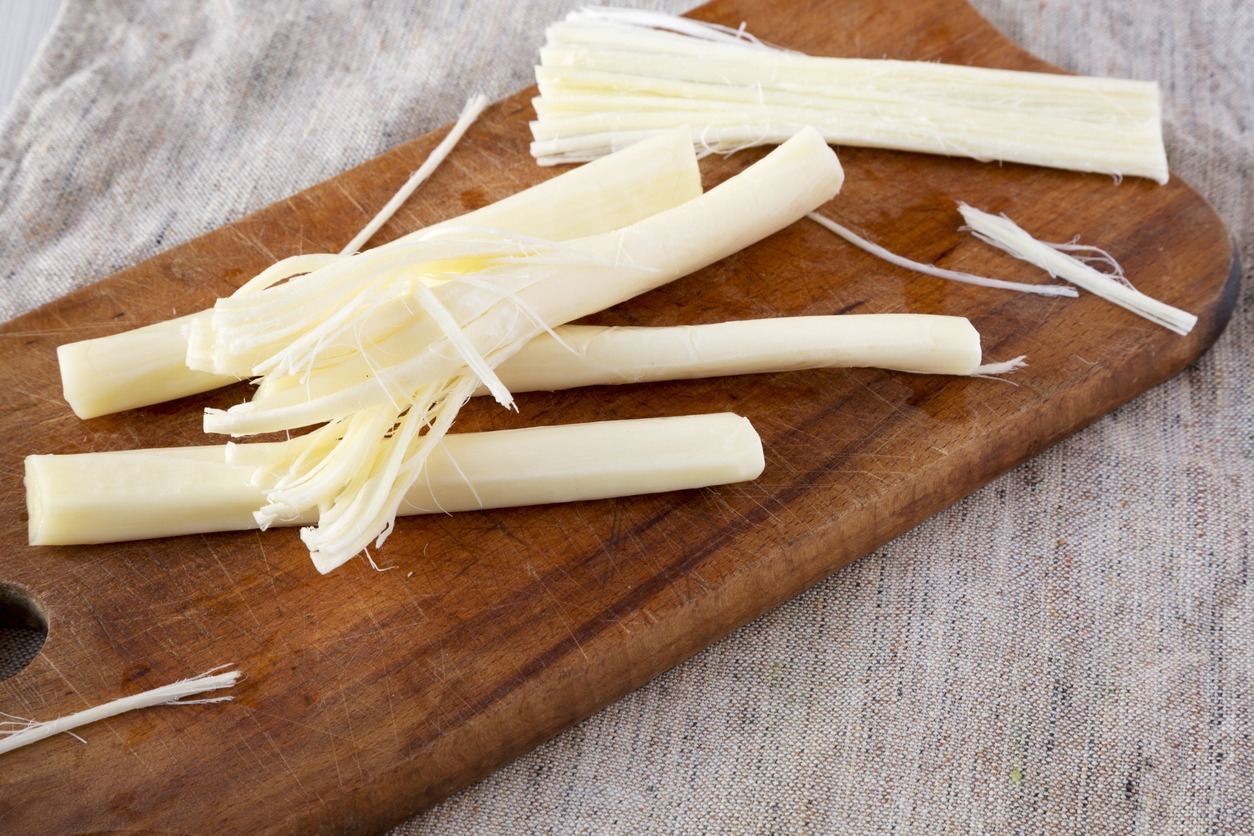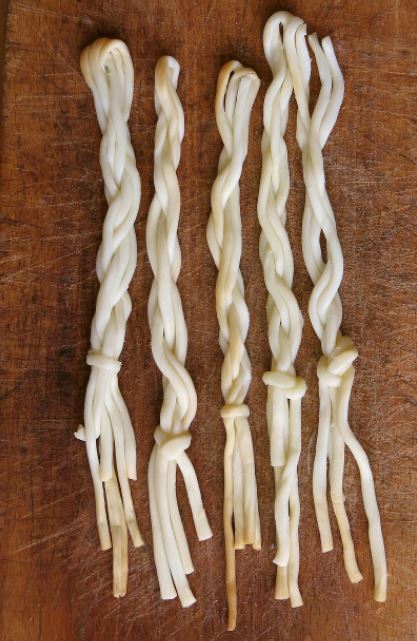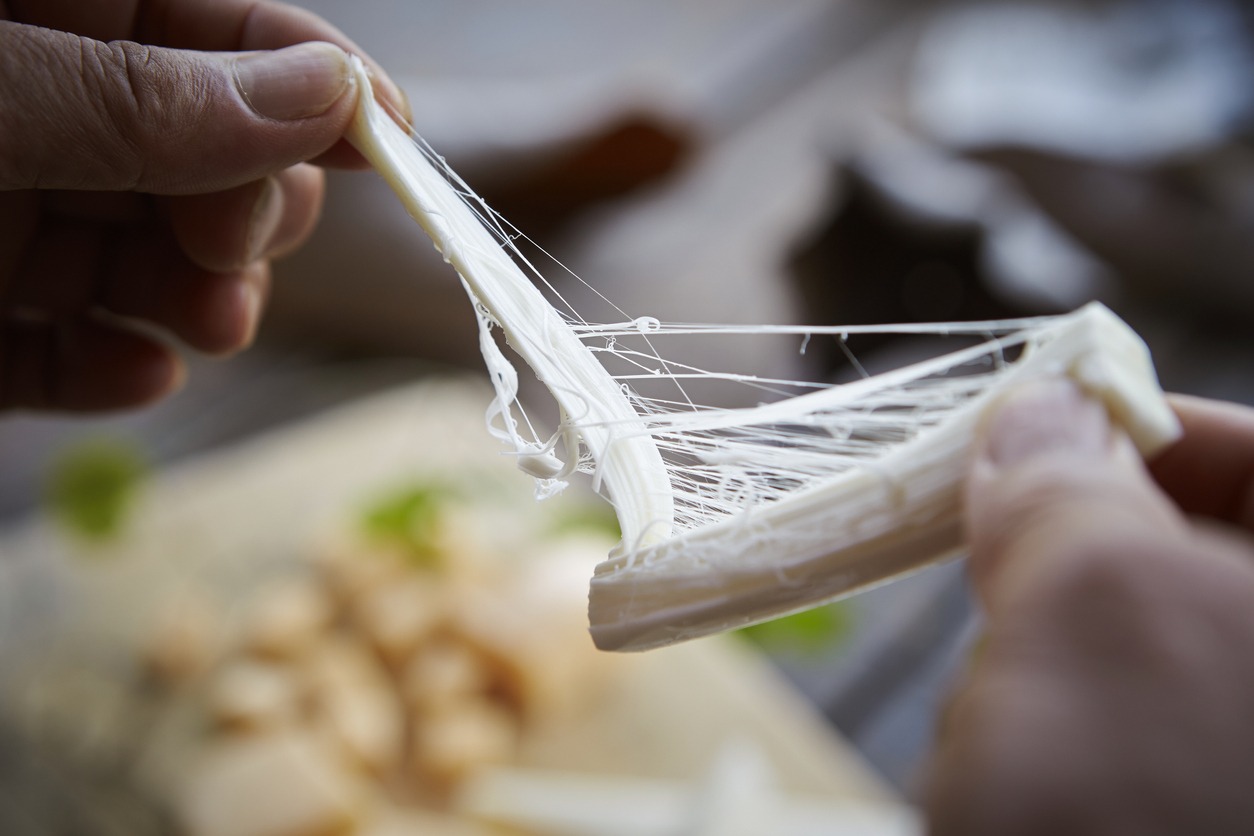String cheese is a “national craze” and an unforgettable childhood staple that has sparked many debates about its roots and the correct way to eat it: whether to “pull strings” or cheese segments or take bites of it whole.
This cheese is called after the appearance of the cheese sticks after they have been pulled apart. Cheese “strings” are formed by pulling the cheese down from one side to the other. It is processed food found in the frozen food section of most supermarkets and is kept cold like many other types of cheese.
But who invented string cheese? What is the origin of string cheese? What prompted the creation of this tasty and entertaining snack in the first place? Continue reading for the answers.
What Exactly Is String Cheese?
String cheese is made by stretching a mozzarella cheese heated to 140°F. The milk proteins in the cheese change and move, especially when heated to this temperature. It is then kneaded and formed into cylinders that can be separated into string strips or strands.
String cheese’s texture and flavor profile are rich, chewy, and milky, with a perfect balance of acid and salt. String cheese is around six inches long and one inch in diameter.
Though the history of your favorite string cheese is varied and complicated, it is believed that the first string cheese was invented by Frank Baker in St. Cloud, Wisconsin. Baker’s string cheese was created in the mid-1970s in response to consumer requests for snack-size pieces of the hot, white melted cheese (mozzarella). You’ll learn more about this further down.
However, breading and frying thin slices of cheese existed as early as the late 1390s. It is documented in the food and cookery section of Le Ménagier de Paris, a medieval French guidebook on a woman’s proper behavior in food preparation, marriage, and household management.
This cheese indulgence can be consumed on the spot or used as the main element in cooking. You can stuff them into poultry or meat, skewer them alongside cherry tomatoes, or wrap them in prosciutto for an instant appetizer.
And, of course, there are the breaded cheese sticks.
String cheese is constantly changing as time passes. The lunchbox staple can sometimes be seasoned with black cumin before being hand-pulled into strings and braided in countries such as Armenia and Slovakia.
Mexico’s string cheese (queso Oaxaca) is formed into balls and picked apart into thin strands. These strings are then placed on a Mexican dish, such as quesadillas. You can also check out these Mexican cheeses you need to know about.
String Cheese History and Timeline
From Lowly Beginnings (1916)
At the age of 16, Frank Baker apprenticed at the Winkler Cheese Factory in Plymouth, WI, where he learned the art of cheesemaking. Six years later, in 1916, he bought a cheese factory in St. Cloud, which is still in operation today.
Frank’s passion and expertise in cheddar cheese production guided the company through the difficult years of the 1920s and 1930s. His inventiveness was demonstrated when he was among the first people to use a cream separator, with the concept of separating cream from whey, which was used to make butter.
String Cheese Original and The Innovator (1950s – 1970s)
Because of the rapidly increasing demand for mozzarella cheese, Francis and Frank decided to convert their plant to a full mozzarella plant. Francis quickly recognized the need for smaller, consumer-sized units, so he took a ball of mozzarella cheese, stretched it until it formed a rope, and cut it into smaller chunks, and thus the original Baker string cheese was born.
Future Expansion (the 1970s to 2000s)
The Bakers’ third-generation collaborated closely with Francis to realize his vision of string cheese as a nutritious, everyday snack. They built themselves as an industry leader in the design and innovation of string cheese manufacturing equipment, trailblazing the extrusion process, which allowed for a more consistent product.
The company’s innovative drive continued with the automation of the cheese cutting process and the introduction of individually wrapped packs of string cheese, meeting consumer demands for convenience. Baker string cheese experienced strong demand and growth in the 1990s and 2000s. The company committed to three large-scale plant expansions that assisted in solidifying the company’s position as a national string cheese leader.
Keeping It Current (2000)
The fourth generation of the company is committed to the company’s award-winning string cheese tradition and continued innovation by meeting consumer demands with additional offerings like Reduced Fat, Kosher, Twist, and Organic string cheese products.
Committed employees and strong manufacturing principles enable the company to offer its signature string cheese in various convenient packaging styles while still using natural ingredients to offer the freshest string cheese on the market. Baker Cheese’s entire team will prioritize quality, freshness, and service.
What Causes String Cheese to Be Stringy?
You might be stunned to discover that the cheesemaking process plays a significant role in producing your favorite stringy cheese.
String cheese’s stringiness is created naturally when an auger stretches and pulls the cheese while being heated to 140 degrees. The milk proteins start to change and move at this temperature, aligning horizontally. Milk proteins become stretchy as a result of this alignment.
String Cheese Storage
When you buy string cheese at the grocery store, it can remain fresh for around a week after it expires if you store it in the refrigerator. It’s also a good idea not to open the package if it’s not required. If it’s already open, the next step is to transfer the cheese to an airtight container so you can tightly seal it for longer shelf life.
National String Cheese Day
The stringy snack, usually made with mozzarella cheese, is celebrated on National String Cheese Day. Galbani Cheese established the national celebration in 2017. Frank Baker’s original string cheese resembled a twisted rope, and he tested it out at parties and bars to see how well it went over.
Within a few years, the cheese had taken on its cylindrical shape, individual packaging for every string of cheese extended its shelf life, and it grew popular throughout the country. Other companies may have invented string cheese at about the same time as Baker, but there’s no evidence.
How to Celebrate National String Cheese Day
Eat string cheese to commemorate the occasion. Mozzarella is the most common, but if you look around, you may be able to locate other types as well. Eat the cheese in strings as you digest it to commemorate the occasion fully.




